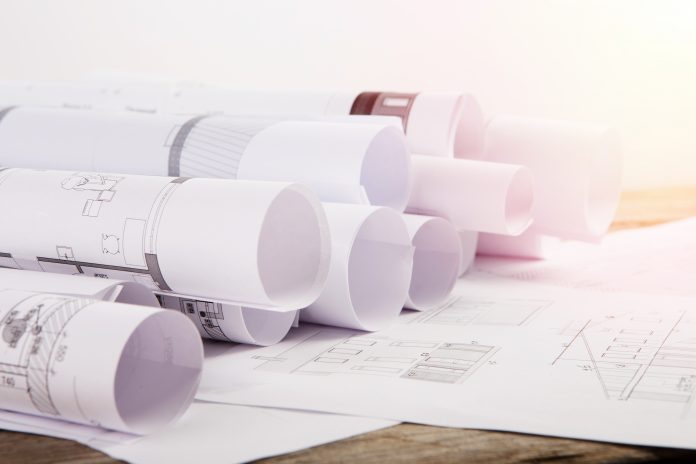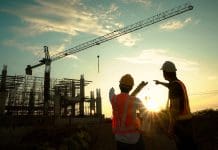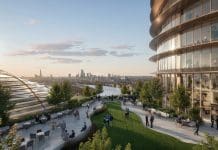In August 2020, new Permitted Development Rules (PDRs) came into force which could provide for a large boost to the government’s housing target of 300,000 “new” homes a year by 2025. These PDRs allow for buildings of at least three storeys in height to build upwards to a maximum height of 30 metres. Ben Arrowsmith, associate at BDB Pitmans discusses more
The PRDs also permit homeowners to add an extra two storeys on top of existing two-story homes up to a maximum height of 18 metres.
Knight Frank, the estate agency, had analysed these provisions and reckon that the PDRs could provide around 170,000 new homes (if all relevant buildings in cities are developed), a little over half the government’s annual target. Given the relative paucity of extra homes that these PDRs will generate, the question must be asked – is building upwards the right step to take?
Planning White Paper
The government’s Planning White Paper (published in August 2020) sets out three “areas” which govern what planning rules and policy applies where.
These areas are:
- “Growth” (“suitable for substantial development”);
- “Renewal” (“suitable for development”); and
- “Protected” (areas which “as a result of their particular environmental and/or cultural characteristics would justify more stringent development controls to ensure sustainability”).
The PDRs appear to fall between the White Paper’s “Growth” and “Renewal” areas with a clear intent to exclude “Protected” areas from their ambit.
This has to be right: were the PDRs’ allowed to take effect in areas such as, for example, Norwich, there would be a real danger of irreparable damage being done to swathes of heritage-heavy buildings and areas. However, care does need to be taken concerning those Growth and Renewal areas which are near to Protected areas given the impact of 10-storey buildings on such areas.
Building upwards
Knight Frank is correct in its view that the PDRs will solve some of the issues around building on the Green Belt. Further, taking advantage of buildings already in situ has be to be less damaging from an environmental point of view.
However, this country is all too aware of the social issues, explained later in this article, and the lack of sustainability associated with high buildings. No one has wanted to grapple with the issue of Green Belt for a long time.
My view is that an in-depth study has to be undertaken on what areas of Green Belt actually are fulfilling their raison d’etre: swathes of Green Belt land appear to be ecologically unsound areas which do not prevent coalescence and are not the green spaces desired by people who wish to get out of what can be stifling urban environments.
Releasing those areas of Green Belt land which offer little or no value would unlock potentially a far greater number of homes than would the PDRs.
Social aspects
Although I am aware that 10-storey buildings are not the highest buildings around, there still remains the danger of ghettos coming to fruition and the social and community cohesiveness lauded by the government failing to materialise (or not materialising to any great extent).
The actor, Dan Akroyd, said that he did not know three quarters of the people in his apartment building in New York City. With mental health at a crisis point in this country, exacerbated further with the pandemic, do we really want to potentially worsen this by piling people into high buildings where any semblance of community living is more often than not lost (or, at least, severely diminished)?
The Objectivist poet, Charles Reznikoff, in his Uriel Accosta, writes of a man working on the tenth floor and the neighbouring shops closing:
“At last there was only a light here and there.
These, too, were gone. He was alone.”
Despite Reznikoff referring to commercial activities, the sentiment readily translates into residential scenarios.
Building Better, Building Beautiful?
“A real building is one on which the eye can light and stay lit”. This view of the great Modernist factotum, Ezra Pound, chimes with the crucial role which design must play in boosting this country’s housing supply: the scourge of red brick boxes erected here, there and everywhere provides physical buildings and lines the pockets of developers.
Crucially, however, it does not provide “homes”- places where people can be comfortable and can associate with neighbours, places where people take pride in where they live and want to maintain their properties in good order.
We really need to consider whether the PDRs put into practice the Building Better Building Beautiful Commission’s recommendations where design takes a preeminent role.
As mentioned above, although Protected areas are not within the scope of the PDRs, the impact of such blocks will clearly have a potential impact on Protected areas and it is important that there remains some oversight so that the storeys do not rise untrammelled.
The White Paper’s guiding principle is to “cherish the past, adorn the present and build for the future”. Whilst the last of these appears to be readily obtainable with the PDRs, I am sure the government would not wish that the PDRs to lead to 1960s style blocks: that era of architecture and the social problems associated with it is not a past to be cherished and, clearly, does not adorn the present.

Ben Arrowsmith
Associate














